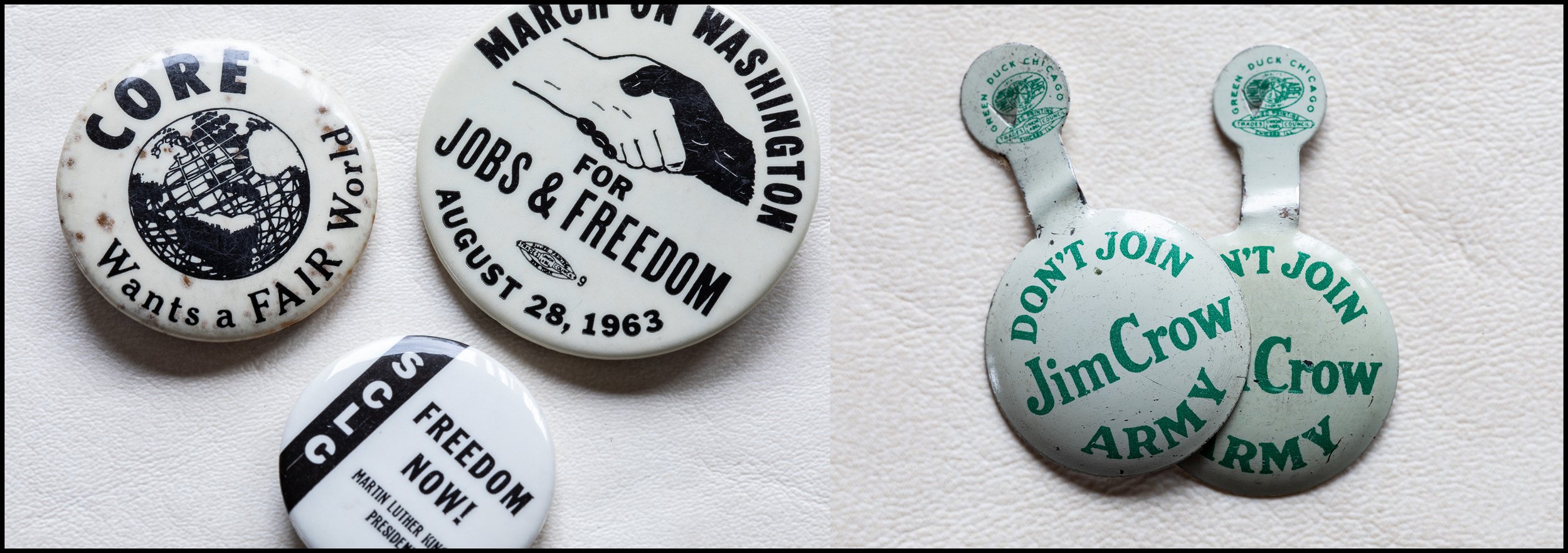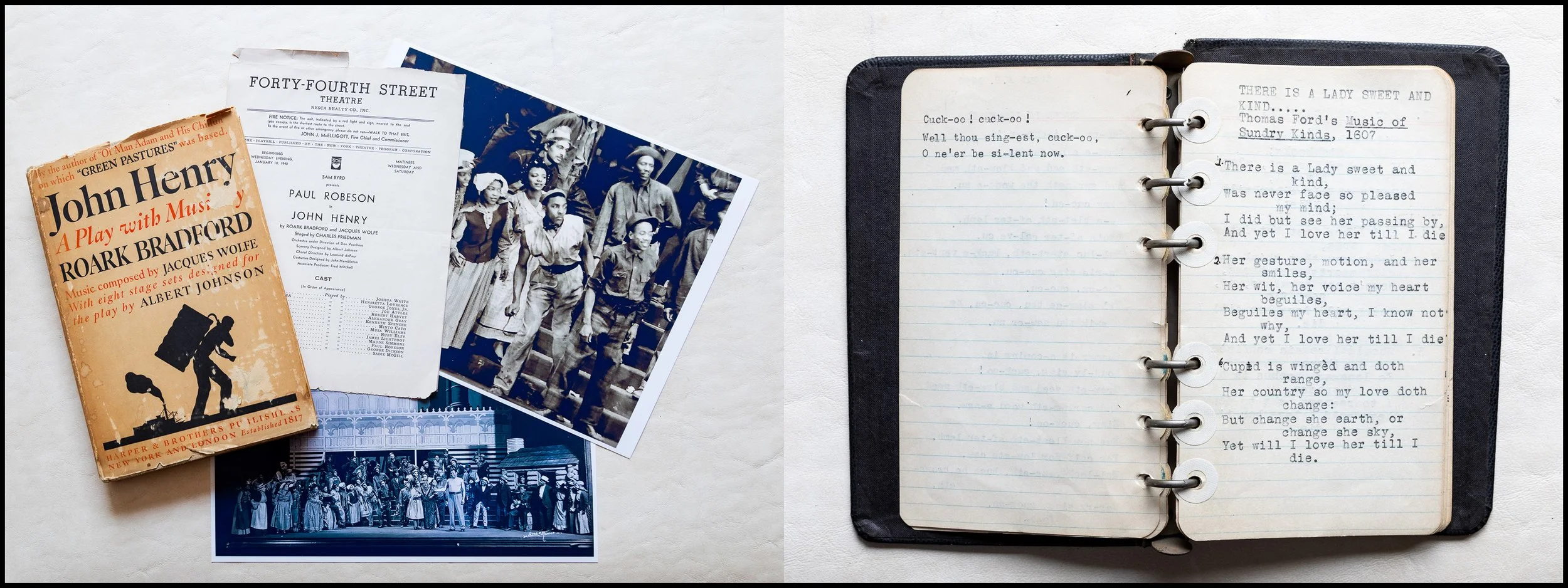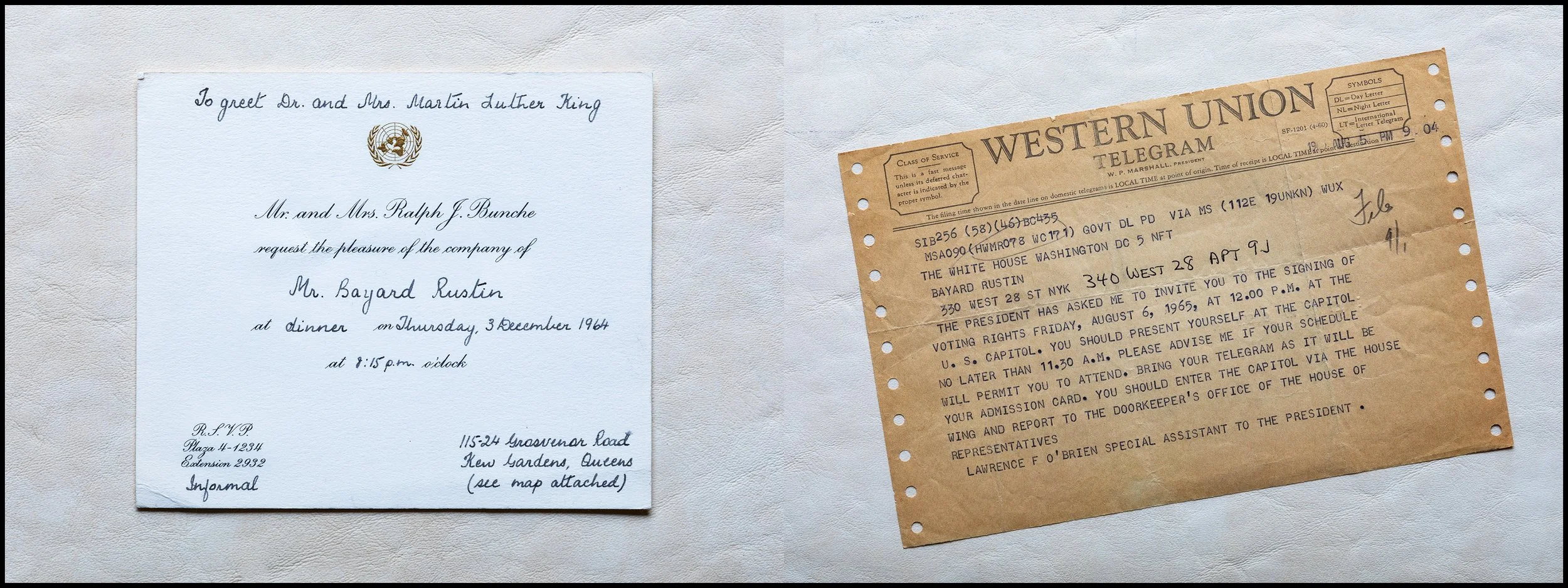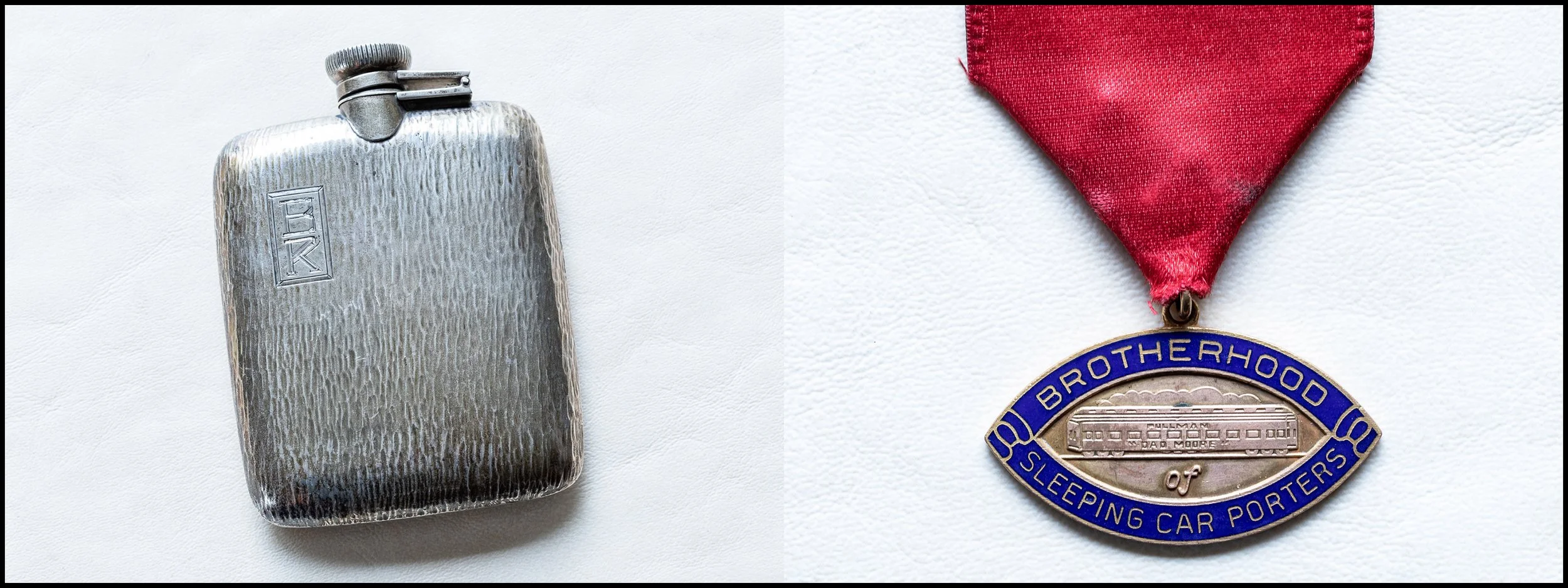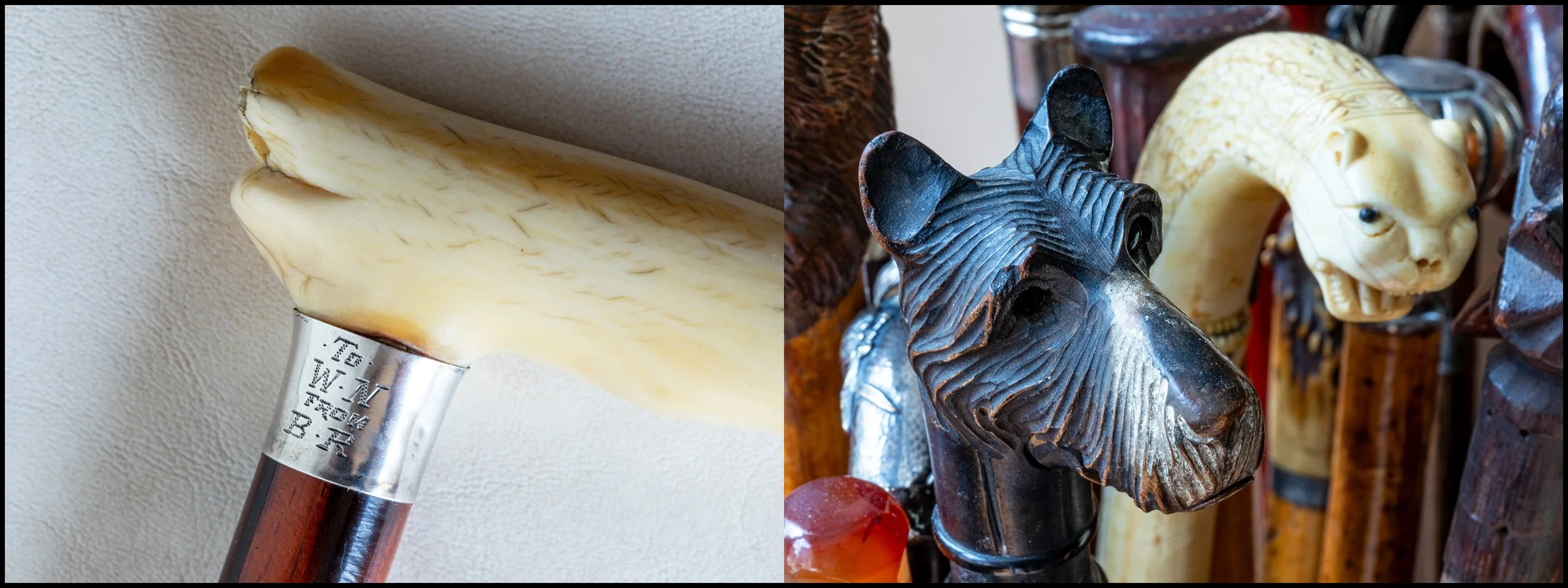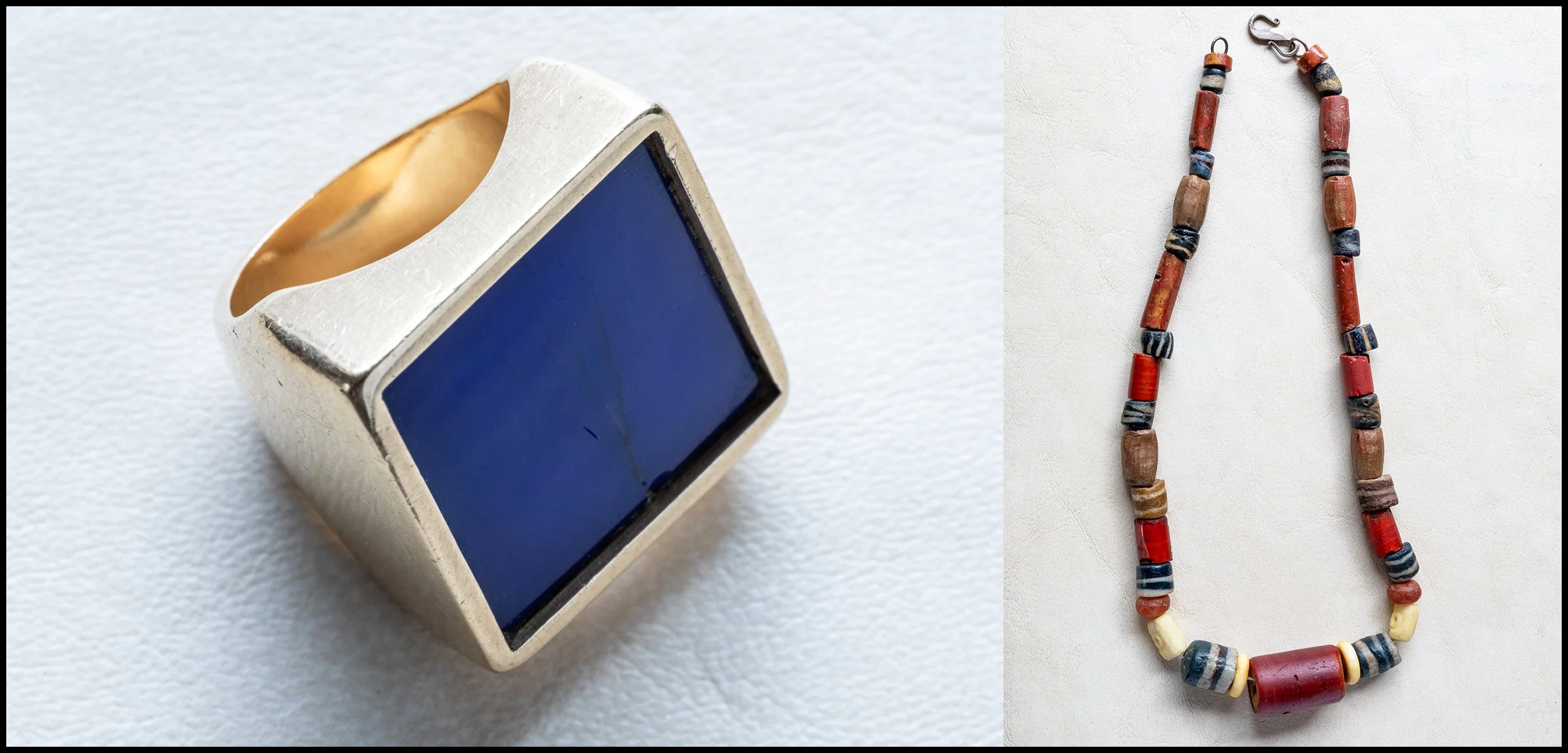SPEAKING TRUTH TO POWER: The Life of Bayard Rustin
DISCOVER THE LEGACY OF A CIVIL RIGHTS ARCHITECT
Gay Feldman, David Katzenstein, and Walter Naegle are delighted to announce the official opening of SPEAKING TRUTH TO POWER: THE LIFE OF BAYARD RUSTIN AT THE NATIONAL CIVIL RIGHTS MUSEUM AT THE LORRAINE MOTEL, Memphis, TN, March 28, 2025.
MEMPHIS, TN – The National Civil Rights Museum at the Lorraine Motel is proud to announce the acquisition of the extraordinary archive of Bayard Rustin, a pivotal figure in the Civil Rights Movement and a lifelong advocate for non-violence, human rights, and equality. This landmark acquisition celebrates Rustin's legacy as a visionary architect of change.
To honor this monumental collection, the museum will launch Speaking Truth to Power: The Life of Bayard Rustin , an exhibition opening on March 28, 2025, in the State of Tennessee Gallery. Spanning eight months, this exhibition will provide visitors with an intimate look into Rustin's life as both a public leader and private individual, showcasing artifacts, fine art photography, and personal items from his extensive archive thanks to Rustin's life partner, Walter Naegle, who provided direction and access to over 500 personal items.
Speaking Truth to Power explores Bayard Rustin's innovative use of the "medium" to communicate powerful messages of non-violence, activism, and authenticity. The exhibit emphasizes Rustin’s ability to capitalize on the technology of his time, structuring awareness and creating dialogue to inspire social change.
Curated by art historian and educator Gay Feldman , this exhibition also features fine art photography by David Katzenstein , capturing over 200 artifacts from Rustin’s personal and professional life. Visitors will see Rustin’s legacy in a new light, including his global influence, activism, and contributions to identity, spirituality, and human rights.
“This exhibition is more than a tribute to Bayard Rustin’s achievements. It is a testament to his enduring message of justice, dialogue, and non-violence that continues to resonate today, ” said Dr. Russ Wigginton, President of the National Civil Rights Museum. Speaking Truth to Power: The Life of Bayard Rustin will run from March 28, 2025, through the end of the year. This marks the first phase of the museum’s commitment to preserving Rustin’s archive. In 2026, selected items will be permanently housed in the newly renovated Legacy Building, making Rustin’s collection a cornerstone of the museum’s offerings.
Key highlights of the exhibition include:
Passports, visas, and driver’s licenses documenting Rustin's global commitment to non-violence over four decades.
Artifacts of activism, such as Rustin's notes for a March on Washington for Civil Rights, "Don’t Join Jim Crow Army" buttons, and telegrams from key historical events.
Personal and public collections, including African sculptures, early Christian and Byzantine art, and folk art from Rustin’s childhood in West Chester, PA.
Intimate memorabilia, such as letters, jewelry, and personal gifts provided by Rustin’s life partner, Walter Naegle.
All photographs © David Katzenstein
All text © Gay Feldman
As an artist and activist, Rustin capitalized on the technology of his time, creating and dispatching messages that continue to activate societal change.
Aesthetic experience is the cornerstone of progressive education and principal to Bayard Rustin’s success as the architect of the Civil Rights Movement.
Breaking boundaries and pushing limits, Rustin harnessed the power of “the medium” to structure awareness, create dialogue, and galvanize a nation towards activism.
The first amendment guarantees freedom of speech. Speaking truth to power, Rustin pressed the media at every turn.
Working side by side with an international and diverse group of contemporary changemakers and thought leaders, Bayard engineered the extraordinary, creating the criteria for change through dialogue and non-violence.
Rustin’s early involvement with the American Friends Service Committee set the stage for a lifetime of activism in the name of human rights, economic equity, education, and freedom.
Whether through print or performance, Bayard Rustin changed the scale of interactions, shaping the character of the message by artful design.
The medium is the message of the complex identities we carry in private and offer the public. Within Rustin’s private collection of early Christian and Byzantine art and his public facing collection of African art and icons we find a reflection of his conscious identity.
Folk Art and artifacts of his early childhood surrounded by loving grandparents in Westchester, PA. Activists and active members of the Quaker Community, his childhood home was frequented by the great leaders of the movement including W.E.B. Du Bois.
Recognized by Presidents and his fellow man, Rustin was also a man of his times who embraced and championed all people.
Rustin harnessed the power of “the medium” to structure awareness, create dialogue, and galvanize a nation towards activism and authenticity.
The vast collection of African American Folk Art, as well as early Christian, Asian and Byzantine religious icons adds deeper meaning in context, as does his exquisite taste in silver and porcelain.
Rings of kings, beads, bracelets, cufflinks artfully procured and designed by Rustin became the hallmarks of Bayard Rustin’s expression and style. The medium was always the message.


